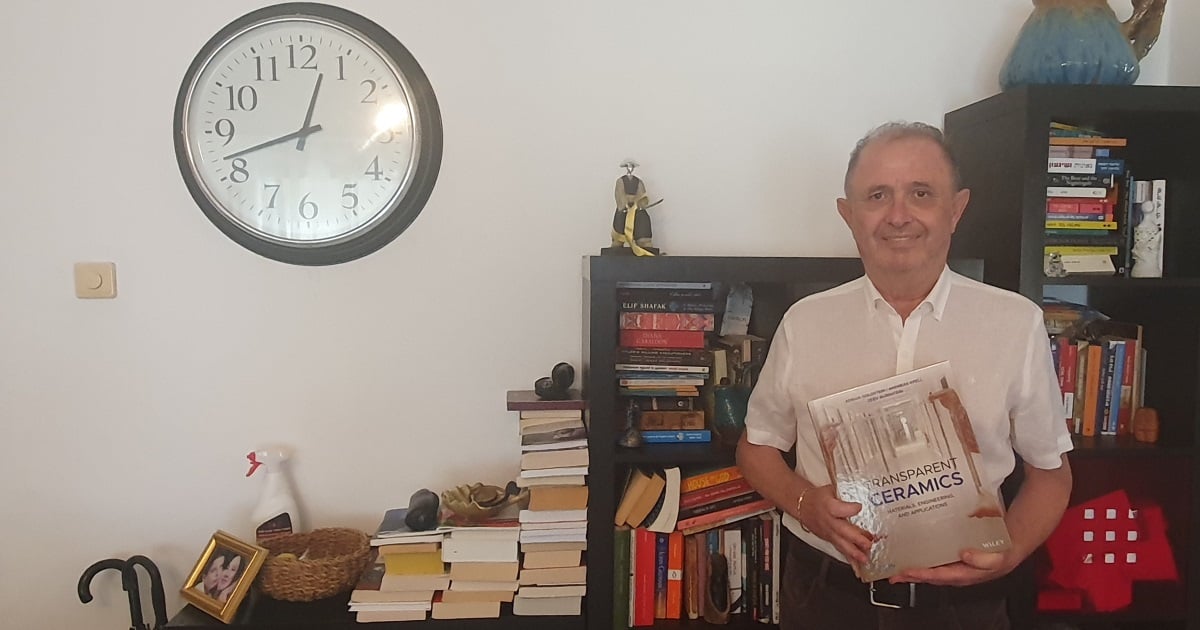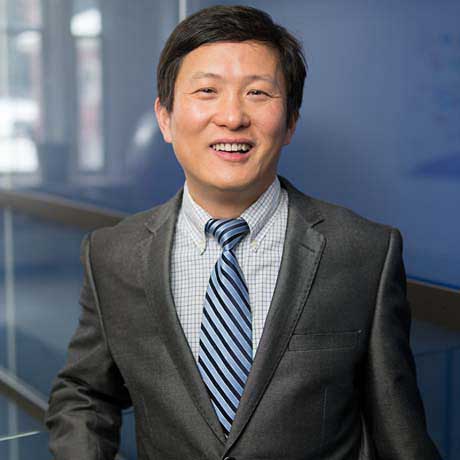Transparent Ceramics—a Theme Issue in Honor of Dr. Adrian Goldstein
A special issue of Ceramics (ISSN 2571-6131).
Deadline for manuscript submissions: closed (31 December 2024) | Viewed by 16253

Special Issue Editor
Interests: transparent ceramics for optical and photonic applications; synthesis and characterization of nanostructured materials for energy and biomedical applications
Special Issue Information
Dear Colleagues,
This Special Issue is dedicated to the domain of transparent ceramics ( TCs); passive or active ones (owing to controlled doping—able to induce designed spectral behavior). It intends to treat topics such as the optimization of all aspects of TC fabrication-related engineering and the introduction of new processing techniques. There is also interest in studies devoted to performance level enhancement of current products (commercial and in prototype stage), relevant characterization techniques (concerning fabrication or performance estimation), and new applications. In many cases, the usefulness of a TC is owed to an adequate design of the dopants package and/or a suitable matching of it with the transparent host. Therefore, works dealing with theoretical and/or applied transition metal cations (TMC), rare-earth (RE) spectroscopy, optical, EPR, Raman, etc., are welcome. So are results regarding host characterization refinements—such as more accurate site symmetry determinations—relevant for dopant accommodation in the host lattice.
The issue also intends to honor Dr. Adrian Goldstein (former head of the Israel Ceramics and Silicates Institute) for his significant contribution to the development of the TC domain. Below, we offer a list of some of the topics studied by the researcher honored. For instance, together with Dr. Andreas Krell (former IKTS-Dresden senior researcher), Dr. Goldstein realized the fact that full ceramics sinterability is obtained more as a result of actions taken in the stage of green-body forming than during sintering. Thus, he demonstrated that an ordered array (obtained by slow gravitational or fast centrifugal deposition) of amorphous micron size cvasi-monodisperse—spherical micron silica particles arranged in a compact packing maintained over large specimen volumes—allows densification fast enough (obtained by MW heating) to generate transparent bulk specimens without crystallization. Arranging, in the same manner, suitable MgAl2O4 powder, highly transparent specimens were obtained via sintering (pressureless + HIP) at temperatures around 1300 oC, viz. many hundreds of degrees lower than is necessary to densify conventional green bodies. He also discovered that, in phosphate glasses, the addition of alkaline-earth metals, as opposed to alkaline ones, reduces the electron donor ability (basicity) of oxide ions. Based on this effect, Cu0-based phosphate stable glasses could be obtained without Sn addition and a striking stage. An interesting finding relates to the accommodation of d1 type cations in oxide glasses. Many such ions (Ti3+, VO2+, Nb4+, Mo5+ and W5+) have in common the tendency to form C4v complexes in oxide glass hosts; the tendency increases with an increase of the oxidation state. Dr. Adrian Goldstein was the first (1998) to obtain transparent spinel via MW sintering (followed by HIPing) and ZnAl2O4 spinel as a transparent ceramic. He identified the main parasitic, reducing incident EMR beams intensity when interacting with spinel or YAG. He determined the mechanisms (promoting or impeding densification) operating when LiF is added to spinel for full densification via hot pressing. Dr. Goldstein also participated in the development of saturable absorber type, Co2+ based Q-switches for Er3+ lasers. Regarding the interaction of transition metal dopants in glasses, he discovered a redox interaction between Cr3+ and Cu2+.
The list of his publications includes, among others, an invited paper on transparent ceramics (J. Amer. Ceram. Soc. 2016) and eight invited lectures on the same topic. A more extensive review of the domain was offered in the book written by Dr. Adrian Goldstein:
Goldstein A., Krell A. and Burshtein Z. “Transparent Ceramics: Materials, Engineering and Applications”., J. Wiley and Sons, N.Y., 2020
Contributions, regarding the topics listed at the start of this document, are invited for this Special Issue “Transparent Ceramics—a Theme Issue in Honor of Dr. Adrian Goldstein”.
Prof. Dr. Yiquan Wu
Guest Editor
Manuscript Submission Information
Manuscripts should be submitted online at www.mdpi.com by registering and logging in to this website. Once you are registered, click here to go to the submission form. Manuscripts can be submitted until the deadline. All submissions that pass pre-check are peer-reviewed. Accepted papers will be published continuously in the journal (as soon as accepted) and will be listed together on the special issue website. Research articles, review articles as well as short communications are invited. For planned papers, a title and short abstract (about 100 words) can be sent to the Editorial Office for announcement on this website.
Submitted manuscripts should not have been published previously, nor be under consideration for publication elsewhere (except conference proceedings papers). All manuscripts are thoroughly refereed through a single-blind peer-review process. A guide for authors and other relevant information for submission of manuscripts is available on the Instructions for Authors page. Ceramics is an international peer-reviewed open access quarterly journal published by MDPI.
Please visit the Instructions for Authors page before submitting a manuscript. The Article Processing Charge (APC) for publication in this open access journal is 1600 CHF (Swiss Francs). Submitted papers should be well formatted and use good English. Authors may use MDPI's English editing service prior to publication or during author revisions.
Benefits of Publishing in a Special Issue
- Ease of navigation: Grouping papers by topic helps scholars navigate broad scope journals more efficiently.
- Greater discoverability: Special Issues support the reach and impact of scientific research. Articles in Special Issues are more discoverable and cited more frequently.
- Expansion of research network: Special Issues facilitate connections among authors, fostering scientific collaborations.
- External promotion: Articles in Special Issues are often promoted through the journal's social media, increasing their visibility.
- e-Book format: Special Issues with more than 10 articles can be published as dedicated e-books, ensuring wide and rapid dissemination.
Further information on MDPI's Special Issue policies can be found here.





